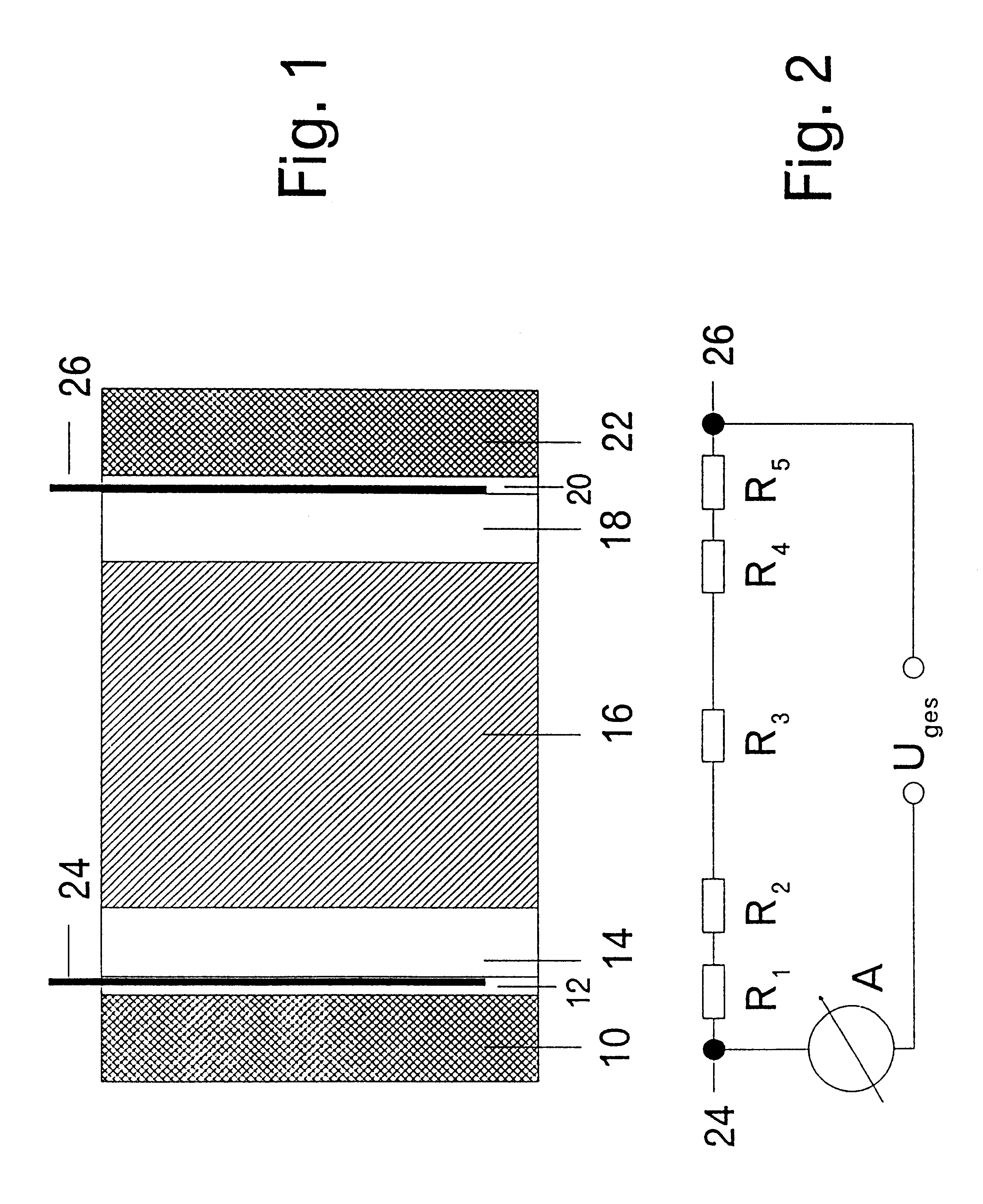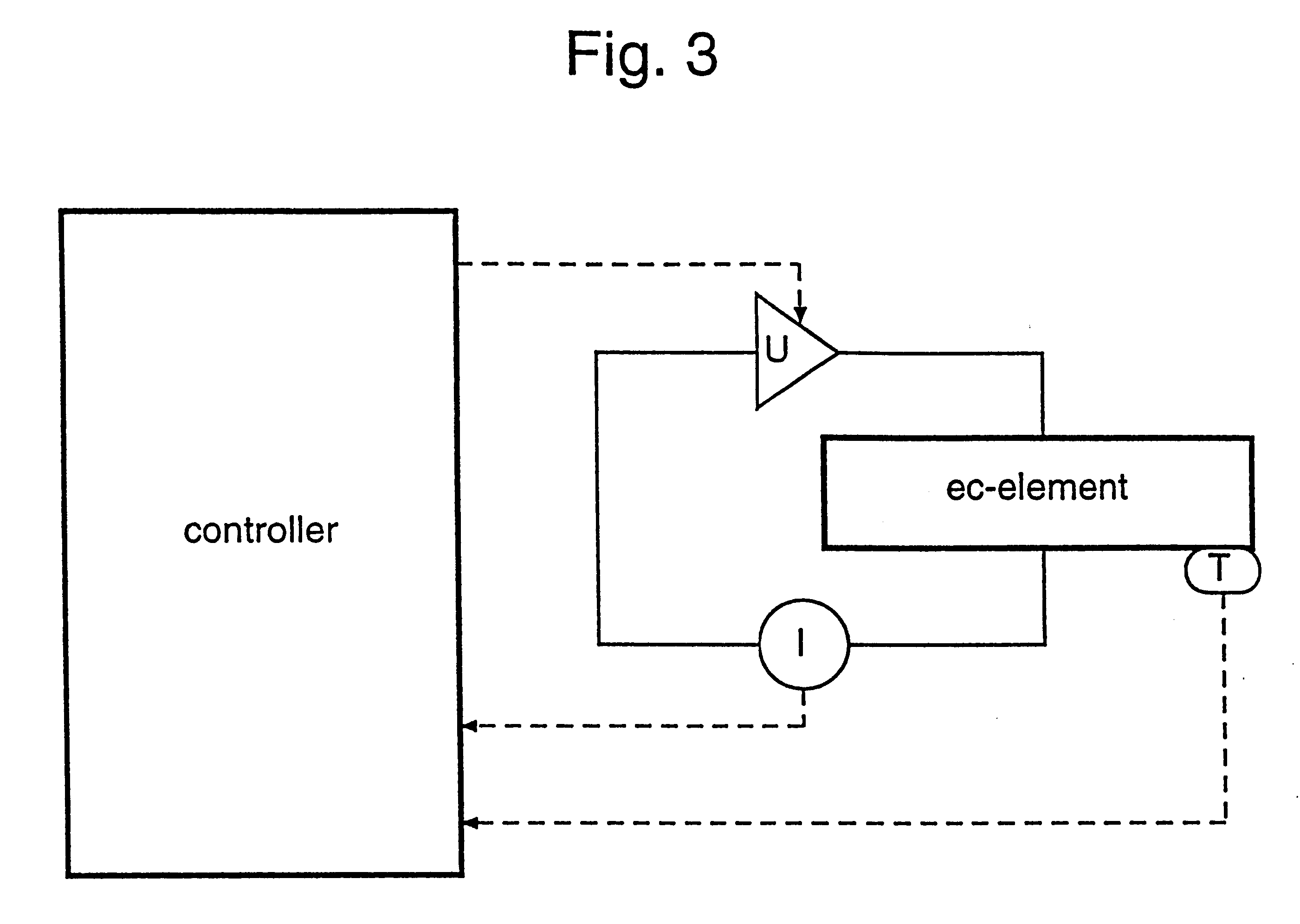Process for driving an electrochromic element
- Summary
- Abstract
- Description
- Claims
- Application Information
AI Technical Summary
Problems solved by technology
Method used
Image
Examples
Embodiment Construction
The Invention will be explained in its use for a completely bleached electrochromic element, where, on application of a positive voltage U, a current with positive polarity flows through the element, which leads to colouring of the element. Proceeding from a coloured state of the electrochromic element, a voltage U of negative polarity induces a current I of negative polarity, which leads to bleaching of the electrochromic element.
A suitable control unit, consisting of controller, voltage generator and measuring instruments in accordance with the schematic in FIG. 3 provides the necessary voltages and currents and continuously measures, preferably at regular intervals, the voltage U, the current I and the temperature T. In practice it has proved useful with colour-change times in the minutes range to measure the current I several times per second.
In the example chosen, the electrochromic element is in its bleached state. Between the connections of the electrochromic element, an open...
PUM
 Login to View More
Login to View More Abstract
Description
Claims
Application Information
 Login to View More
Login to View More - R&D Engineer
- R&D Manager
- IP Professional
- Industry Leading Data Capabilities
- Powerful AI technology
- Patent DNA Extraction
Browse by: Latest US Patents, China's latest patents, Technical Efficacy Thesaurus, Application Domain, Technology Topic, Popular Technical Reports.
© 2024 PatSnap. All rights reserved.Legal|Privacy policy|Modern Slavery Act Transparency Statement|Sitemap|About US| Contact US: help@patsnap.com










